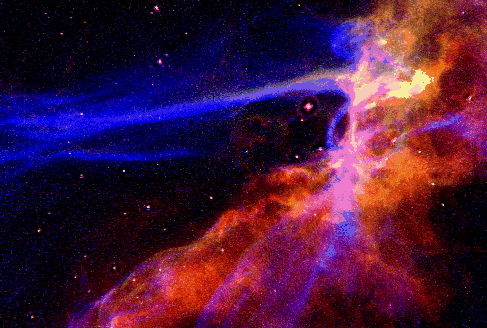Explanation: A supernova explosion of a high-mass star results in fast moving blast waves. At the front of the waves shown above, ionized gas in the Veil Supernova Remnant rushes out from the explosion, sweeps up material, and breaks up many atoms into constituent ions and electrons. Observations with the Hubble Space Telescope in 1993 indicate that the blue shock wave was catapult away from the stellar explosion after the red shock wave and has yet to catch up to it in some regions. The Veil supernova remnant's has a very large angular size - six times the diameter of the full moon - and different parts of it are known as the "Cygnus Loop" and catalog numbers NGC 6960, NGC 6979, NGC 6992, and NGC 6995.
Information:
The
Scale of the Universe Debate in April 1996
1999 2000 2001 2002 2003 2004 2005 2006 2007 2008 2009 2010 2011 2012 2013 2014 2015 2016 2017 2018 2019 2020 2021 2022 2023 2024 2025 |
Январь Февраль Март Апрель Май Июнь Июль Август Сентябрь Октябрь Ноябрь Декабрь |
NASA Web Site Statements, Warnings, and Disclaimers
NASA Official: Jay Norris. Specific rights apply.
A service of: LHEA at NASA / GSFC
& Michigan Tech. U.
|
Публикации с ключевыми словами:
Veil Nebula - Сверхновые - остаток Сверхновой - ударные волны
Публикации со словами: Veil Nebula - Сверхновые - остаток Сверхновой - ударные волны | |
См. также:
Все публикации на ту же тему >> | |
